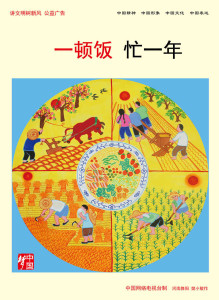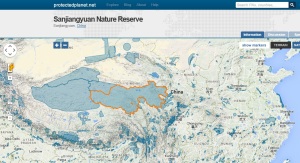TIBET AS CHINA’S BARGAINING CHIP IN PARIS
As the global climate negotiations get under way in Paris, the planet awaits its man-made future. The Tibetan Plateau, not a net contributor to greenhouse gas emissions, also awaits outcomes from Paris, knowing full well it is a planetary front line, warming faster than almost any inhabited region of the Earth.
The facts of the accelerated warming of Tibet are well-known: the melting glaciers, receding permafrost, drying of the wetlands, earlier springs, advancing degradation, desiccation and even desertification, loss of habitat for migratory birds, stronger monsoon penetration into the deep interior of Tibet, poleward shift of the jetstream deviating northwards around that greatest of islands in the sky, the Tibetan Plateau.
What this means to Tibetans is the early melting and disappearance of water frozen in the subsoil, trickling away before springtime roots can reach down to it, resulting in crop failure.
Many people think that since Tibet is so cold, warming must be good. It’s not that simple. China looks at the warming as promising, in several ways. In the next few decades, higher rainfall plus melting glaciers mean greater river flows, a dividend of climate warming. Once the glaciers are gone, their capacity to magnetise all water vapour out of thin air, hold and release it steadily, will be gone, but that is decades away. In the short term, the lake levels across Tibet are rising, after centuries of slowly dropping; and the rivers flow more strongly. Chinese scientists are hopeful that eastern Tibet will warm sufficiently to be able to grow Chinese crops and trees.
Downriver from Tibet, those wild mountain rivers plunge to the lowlands of East, Southeast and South Asia, providing water drunk daily by over one billion people. As the rivers get stronger due to warming and deeper monsoon cloud entry into Tibet, those rivers will erode faster, carry a heavier sediment load, to be deposited in the cascade of dams China is building on all major Tibetan rivers; or the sediment will continue downriver, bearing with it dangerous toxic metals, including arsenic, with even more added to the natural baseload by large scale mines close to the rivers.
These are the well-known practical consequences of climate warming in Tibet; adding up to a strong case for Tibet be top of the planetary agenda, as the Third Pole of this Earth of ours, and almost two percent of the land surface of the planet.
TIBET ON THE NEGOTIATING TABLE
What is less well known is that Tibet occupies a special place in China’s negotiating strategies, as a pawn in a great game China plays, with the objective of being left free, after Paris, to continue indefinitely to be the world’s biggest greenhouse gas emitter, world’s biggest coal burner, committed to ongoing economic growth as fast as possible, without being bound by treaty to any emissions quota, or any legally binding treaty that holds China accountable. These are China’s core interests, which it will be free to achieve only if it can deflect pressure from almost all other countries, Can China persuade the world that in other ways, it is a good global citizen playing its part to reduce emissions? Enter Tibet, China’s great bargaining chip.
How can China, which burns more coal than the rest of the world put together, hope to get away without any international constraint on its factories? How can China avoid committing to actual emissions reductions, rather than its vague pledge to reduce the energy intensity of its GDP, which happens naturally in any economy no longer focused solely on manufacturing? As China becomes a consumer society, spending big on entertainment, sport, banking and retail, the amount of energy used per unit of GDSP inevitably reduces, as the service industries expand, and the economy is no longer dominated by mining, energy extractio0n, manufacturing and infrastructure construction. Yet while other countries pledge actual emission cuts, China has offered only to reduce emissions intensity by growing the services economy. Even though global governance is so weak that the best we can hope from Paris is that each country sets its own targets, will the world accept China’s declaration of what it is willing to do?
This is where Tibet comes in: the ace up China’s sleeve. More than half of China’s nature reserves and national parks, dedicated to carbon capture by excluding human use, are in Tibet. Those nature reserves offset China’s emissions by soaking up carbon into Tibetan grasses. Thus China shows it is a good global player, accepting its share of responsibility. The losers are the “ecological migrants”, the pastoral nomads of the Tibetan Plateau, removed from their ancestral lands, their herds sold and their land tenure rights cancelled, in the name of climate change mitigation and offsetting pollution from the world’s factory, located on China’s east coast.
China is huge, geographically as well as in population size, a world unto itself. China can well afford to zone its vast grasslands as counterweight to its industrial core. China has always focused narrowly on its arable lands as its source of food, largely ignoring the far bigger production landscapes of the grasslands, not only in Tibet but also Inner Mongolia, Xinjiang, and much of the cold northeast. Only arable land, suited to intensive farming, is counted as production landscape in China, leaving the vast rangelands as a problematic periphery, often designated as waste land, but these days repurposed as land locked away from all productive use, for the sole purpose of growing more grass, proclaiming China’s green credentials.
China imagines itself as a nation of honest, hard-working peasant farmers, not as free ranging pastoralists. The more urban China becomes, the more official propaganda evokes nostalgia for peasant farming as the soul of China’s stability and identity. Here are propaganda posters from 2013:
Although official rhetoric insists that the new wave of displaced people are voluntary “ecological migrants”, the reality is that when cadres come down to a nomad “village” with a fixed quota of how many people must leave, that quota must be fulfilled. The official slogan driving the pastoralists off their land is tuimu huancao: close pastures to grow more grass.
Grass is now fetishized as an end in itself. Chinese scientists dutifully measure the increase in grass biomass in pastures where grazing is banned; while official planners draw red lines round huge areas designated solely and exclusively for downstream water production and grass growth, excluding all human use (at least on paper, since illegal mining flourishes even in “protected areas.”)
China can claim to be doubly virtuous. Not only is it sequestering carbon, the grazing herds are excluded, along with their herders, thus reducing the methane emissions from belching yaks, a serious source of greenhouse gases. In reality China is committed to rapidly increasing meat consumption, using up a high proportion of its corn and sorghum production to feed its rapidly growing number of pigs and cattle, fed not on the open range but in intensive feedlots close to cities, the most intensively polluting way of raising livestock. The long term plan for Tibet is also to invest heavily in feedlots, as the modern, scientific way of turning animals into meat.
But on paper it all looks good. If one looks at global databases of protected areas, China now seems to be a good global citizen, close to achieving the targets such as the UN Convention on Biodiversity target that 17 per cent of all land be set aside as natural habitat. The exclusion of the pastoralists of Tibet from the best pastures of eastern Tibet is at most a footnote, barely noticed. On the map China is playing its part:
When the nomads were first told they must relocate to concrete settlements on urban fringes, they were initially told it was for 3, or 5, or at most 10 years, to ensure degrading lands recover and watersheds are thus protected from degradation. That was in 2003, when tuimu huancao implementation began. Now those “experimental” periods are over, and no-one has been allowed officially to return.
Do degrading lands recover by themselves, without human intervention, just by excluding the traditional custodians of the land? The scientific evidence shows that areas overgrazed, due to official policies that fragment herds and crowd animals onto small allocated patches, do not recover by themselves. What does happen is that dominant grasses grow taller, overshadowing the many medicinal herbs Tibetans have always found in their alpine meadows. Biodiversity thus decreases, even when biomass increases. After a few years good grazing land reverts to shrubland, reversing the efforts of the pastoralists to keep their country open. Yet China persists in calling this policy a success.
Climate change in Tibet serves a second purpose to official China. Since climate change is global, and China gets much sympathy by blaming it on rich nations, China can claim special status as a developing country entitled to compensation, and latitude for its ongoing pollution as it catches up with the rich, as is its right. Likewise, China can fudge its role in causing the degradation of the Tibetan grasslands, through mistaken official policies and their perverse outcomes over many decades. China can argue that the degradation problems, even the desertification of Amdo, are due to global climate change, and the ignorance of the Tibetans, nothing to do with China’s improper policies and their perverse outcomes.
Global climate change masks China’s many policy failures, as it fragmented pastoral lands in the 1980s, after decades of doing the opposite: herding both people and animals into huge communes to intensify production. China’s productivist ideology is the heart of the problem, concealed by China’s climate change rhetorics.





